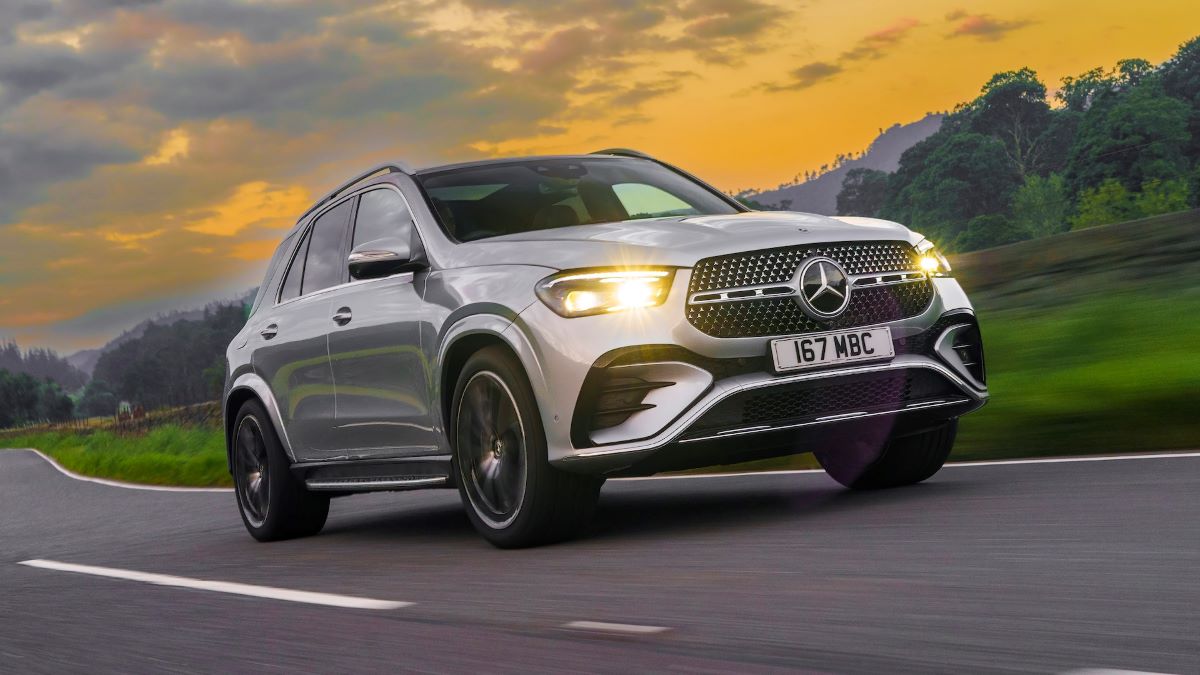When it comes to vehicle maintenance, battery replacement is one of the most common — and surprisingly variable — costs that owners encounter.
While most drivers expect to pay a modest sum for a new battery, the reality is that prices can swing dramatically depending on the car’s design, battery type, and manufacturer-specific requirements.
Some vehicles allow for easy, budget-friendly replacements under $150, while others can push well past $400, often catching owners off guard.
This article breaks down the wide spectrum of car battery replacement costs by showcasing five cars where replacing the battery stays comfortably under $150 and five others where the cost soars above $400. These figures include both parts and labor, where applicable, and are based on real-world averages from owner reports and service centers.
We’ve selected these cars to represent a broad range of market segments — from compact commuters and hybrids to luxury sedans and large SUVs.
The goal is to help current and prospective vehicle owners understand what kind of battery replacement costs they can expect and how those costs play into long-term ownership.
Let’s begin with the vehicles that won’t break the bank when it’s time for a new battery — the under-$150 crowd.
Also Read: 5 Cars Where Minor Repairs Total Over $1,000 And 5 That Stay Manageable
5 Cars Where Battery Replacements Are Under $150
Battery replacement is one of the most routine maintenance tasks car owners face, yet it’s increasingly a point of concern due to rising costs in the automotive parts market.
However, there are still vehicles that allow owners to replace their batteries for less than $150—a figure that includes both the cost of the battery and installation labor, when necessary. These are cars where simplicity, accessibility, and common battery sizing make maintenance cost-effective.
Most of the vehicles in this list are non-luxury models with conventional gasoline engines and standard 12-volt battery systems. They use widely available battery types that can be purchased at auto parts stores or big box retailers.
What sets them apart is how straightforward the replacement process is—some owners can even do it themselves in under 15 minutes without specialized tools.
We chose these cars based on service data, DIY community feedback, and parts pricing from multiple vendors. These vehicles stand out not just for their low replacement costs, but also for their mechanical friendliness and accessibility, traits that are increasingly rare in today’s tech-heavy, tightly packaged vehicles.
This list is especially relevant for budget-conscious drivers, students, fleet managers, and anyone who prefers a vehicle with low-cost ownership over flashy features. It’s also a valuable reminder that not every modern car requires a trip to the dealer or hundreds of dollars just to replace a basic component.
In this section, we’ll highlight five cars known for keeping battery replacement costs under the $150 mark.
We’ll explain what makes each one affordable and what owners can expect when the battery finally gives out. These vehicles prove that it’s still possible to enjoy automotive convenience without financial frustration every time the hood is popped.
1. 2010–2017 Toyota Corolla
The Toyota Corolla has long been a go-to choice for drivers seeking reliable, low-cost transportation, and its battery replacement costs are in line with that reputation.
For models built between 2010 and 2017, the Corolla uses a standard 12-volt Group 35 battery that is widely available and affordable. This compatibility with common battery types keeps replacement costs under $150 in most regions.
Auto parts stores like AutoZone, O’Reilly, and Walmart typically stock Group 35 batteries ranging from $110 to $130, with multi-year warranties included. Some cost-conscious drivers can find deals under $100 for budget brands.
Labor charges are minimal because replacing the battery in this Corolla generation is simple: open the hood, unbolt the hold-down bracket, disconnect the terminals, and drop in the new unit. Many Corolla owners do this themselves in less than 20 minutes.
Another factor working in favor of affordability is the lack of complications during installation. There’s no need to reset sophisticated computer systems or reprogram sensors. The car’s design makes the battery easily accessible right at the front of the engine bay.
Unlike some modern cars where a battery swap can inadvertently trigger check-engine lights or require diagnostic tool resets, the Corolla keeps things refreshingly old-school.
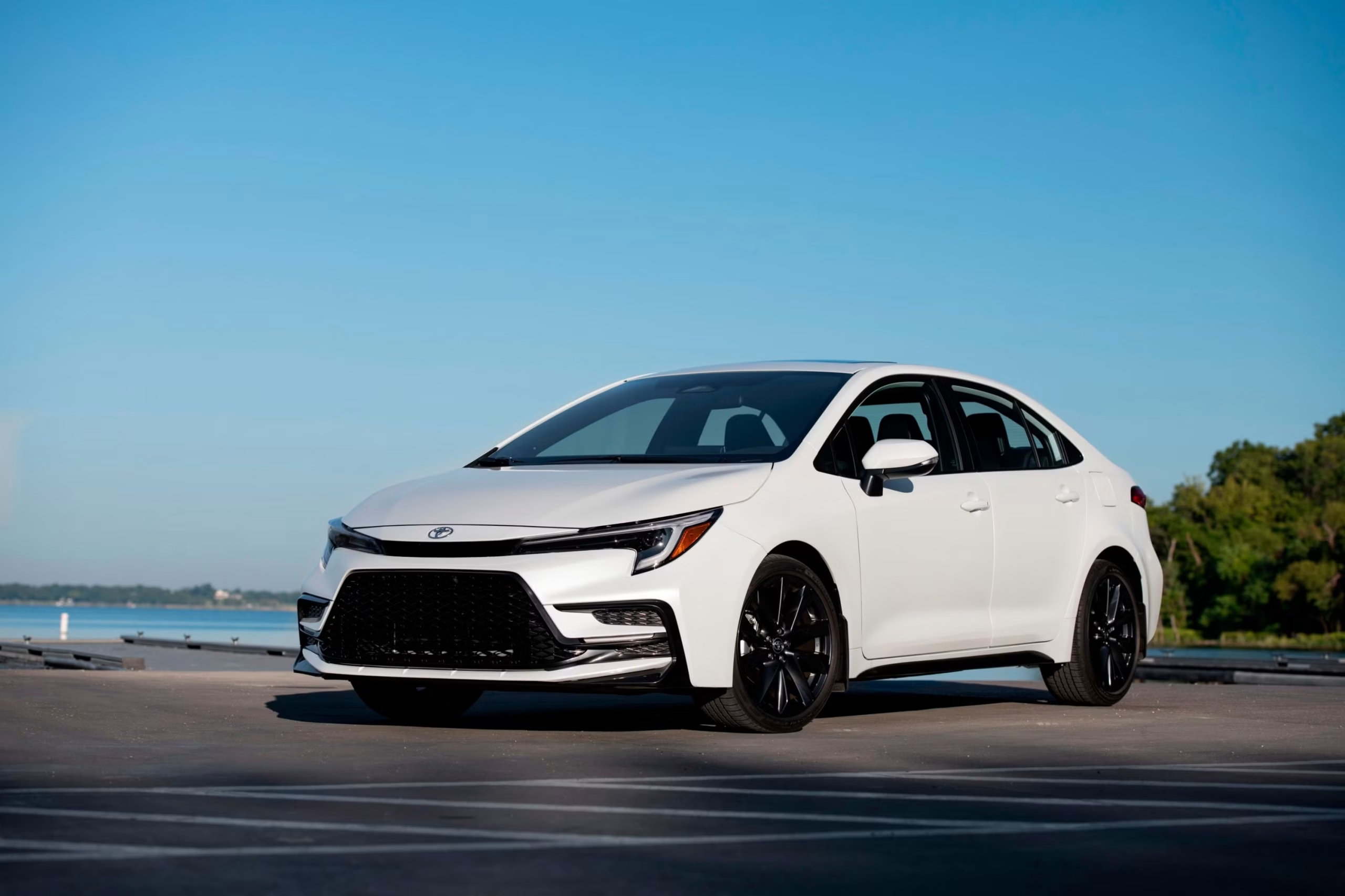
The alternator and charging system in these years is also relatively gentle on batteries, meaning owners typically enjoy a full 4–6 years of use before needing a replacement.
Because of this longevity and simplicity, the total cost of ownership remains impressively low, particularly for students, commuters, or budget-minded families.
The Toyota Corolla from this era is also known for minimal parasitic battery drain, reducing the risk of premature failure. Even drivers in colder climates find that their Corollas start reliably through winter months without needing high-capacity AGM or premium batteries.
For anyone prioritizing economy and ease of maintenance, the 2010–2017 Toyota Corolla is hard to beat. Its battery replacement process is a textbook example of why simple engineering and mass-market design can yield big savings over time.
2. 2006–2012 Honda Civic
The eighth-generation Honda Civic (2006–2012) strikes a balance between efficiency, comfort, and user-friendly maintenance. One standout trait in this regard is its low battery replacement cost, consistently coming in at or below the $150 mark—including both parts and labor.
These Civics typically use a Group 51R battery, which is slightly smaller than average but still widely available across the U.S. and international markets. Most replacement batteries cost between $110 and $135 depending on brand and warranty length.
This group size is stocked at virtually every auto supply store, from Costco to Napa Auto Parts, and can be ordered online with ease.
Labor is rarely a factor in cost because replacing the battery is straightforward. The battery is located in the front driver-side corner of the engine bay, with no covers or trim panels obstructing access.
There are only two terminals and a standard hold-down bracket to remove. Even if done professionally, most shops charge no more than $20–$30 for the job.
Honda’s design philosophy during these years favored mechanical simplicity. There’s no start-stop system, no excessive battery-monitoring software, and no need for battery registration or reset using an OBD-II scan tool. Once installed, the new battery is ready to go—no dealer involvement necessary.

The Civic’s electrical system isn’t overly demanding either. Without advanced infotainment systems, energy-hungry electronics, or elaborate lighting schemes, the standard battery is sufficient for everyday needs. This helps keep costs down in the long run, as owners won’t need to upgrade to expensive AGM or deep-cycle units just to maintain functionality.
One extra perk is the availability of affordable third-party brands for Group 51R batteries. Brands like Duralast, EverStart, and Interstate offer frequent discounts and rebates, making even high-quality batteries cost-effective for Civic owners.
This generation of Honda Civic is widely praised not only for fuel economy and reliability but also for minimizing ownership headaches.
For those seeking a practical daily driver where even basic maintenance stays well within budget, the 2006–2012 Civic remains a smart, wallet-friendly choice.
3. 2011–2019 Ford Fiesta
The Ford Fiesta, particularly in its sixth-generation form (2011–2019), is affordable for small cars across the board, including battery replacements. This subcompact hatchback or sedan uses a standard Group 96R 12-volt battery, and most replacements stay under $150—even after taxes and light labor charges.
These Group 96R batteries are inexpensive, with prices at major retailers like Advance Auto Parts, Amazon, and Walmart typically falling between $110 and $140 depending on brand and warranty terms. Labor is optional for most owners, as the replacement process is uncomplicated and does not involve any complex disassembly.
Ford placed the Fiesta’s battery in a readily accessible spot near the front of the engine bay. While there’s a protective cover, removing it is simple and doesn’t require specialty tools.
Once uncovered, the terminals and hold-down clamp are easily accessed and swapped using standard sockets. The entire job can be completed by a DIY enthusiast in under 30 minutes.
Another reason battery costs remain low on the Fiesta is its relatively basic electronics package. Even higher trims with touchscreen infotainment or smartphone integration don’t require premium batteries or complex reprogramming after a swap.
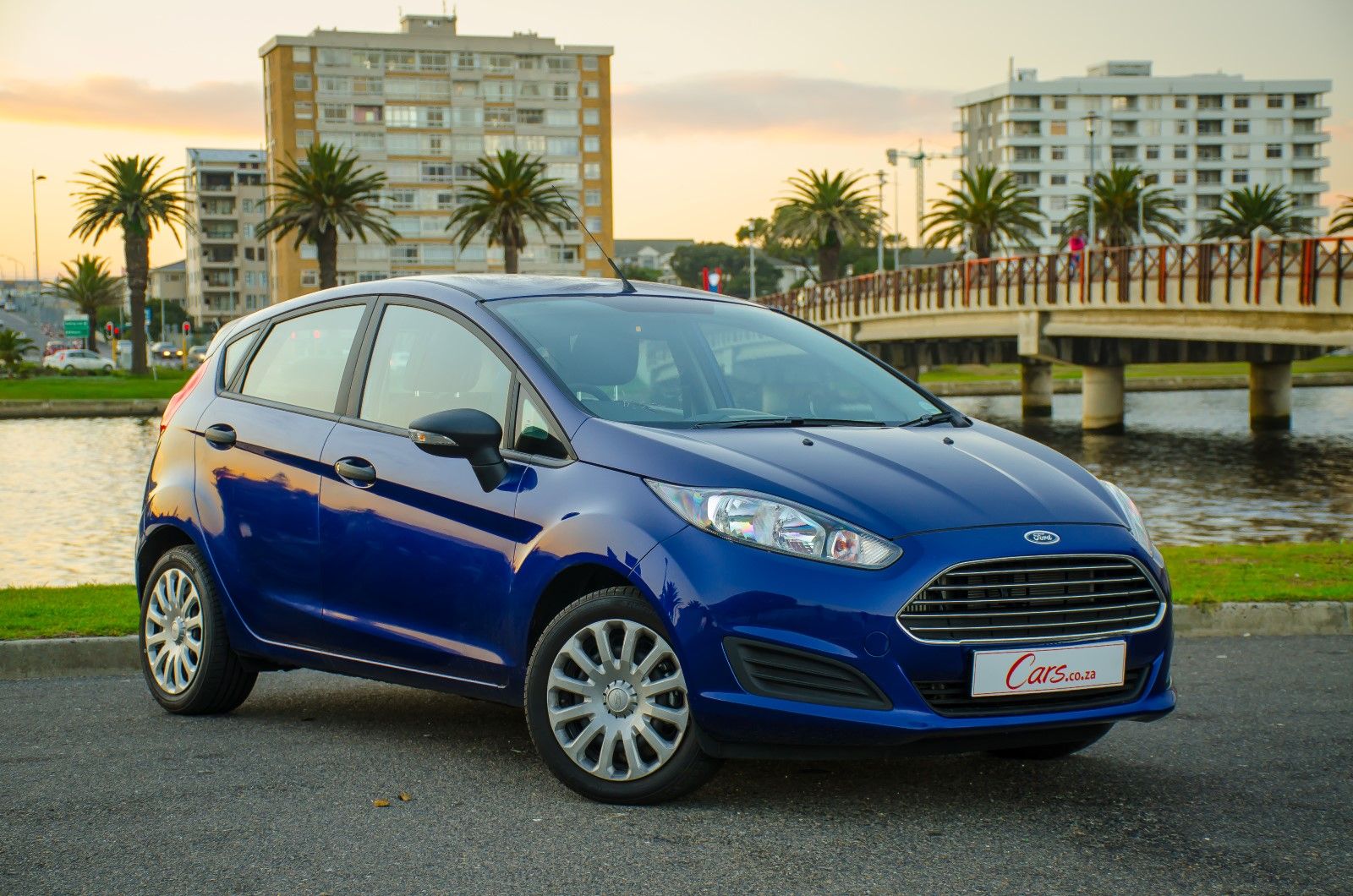
There’s no battery registration process or charging system learning period like you’d see in some German makes.
Owners living in colder climates have also reported good battery lifespan, with 3–5 years being the norm under moderate use. Since the Fiesta was marketed toward urban drivers and commuters, Ford prioritized simplicity and serviceability—two factors that directly translate to affordability over time.
Additionally, the Fiesta’s compact engine bay and lack of hybrid hardware means less parasitic battery draw during downtime. The alternator is reasonably sized and consistent in output, helping ensure longer battery life and reducing the likelihood of premature failure.
In an era where even entry-level cars are becoming tech-heavy and expensive to maintain, the Ford Fiesta proves that value-oriented design still has a place. For drivers who want to avoid hidden maintenance fees and keep every service under budget, this little hatchback (or sedan) delivers big.
4. 2008–2014 Hyundai Elantra
The 2008–2014 Hyundai Elantra stands out in the compact car segment for its combination of value, comfort, and low maintenance costs.
Among its more budget-friendly aspects is the fact that battery replacements are typically under $150, even when labor is included. For owners prioritizing long-term savings, this generation of Elantra hits a sweet spot.
The standard battery used is Group 124R or 35, both of which are common sizes. These batteries can be found for $110 to $135 at most retailers including Pep Boys, AutoZone, and Costco.
Even high-quality options like Interstate or DieHard Gold remain within this price range. DIY installation is straightforward, requiring only a wrench and 10–20 minutes of work—no need to remove complex body panels or electronic modules.
One major advantage of the Elantra is how uncomplicated the under-hood layout is. The battery sits in plain view, unobstructed by covers or tight packaging.
This is a relief for owners tired of squeezing tools into tiny engine compartments or unbolting unnecessary parts just to reach the terminals. The lack of insulation panels or sensor-laden brackets makes for an efficient and easy battery swap.
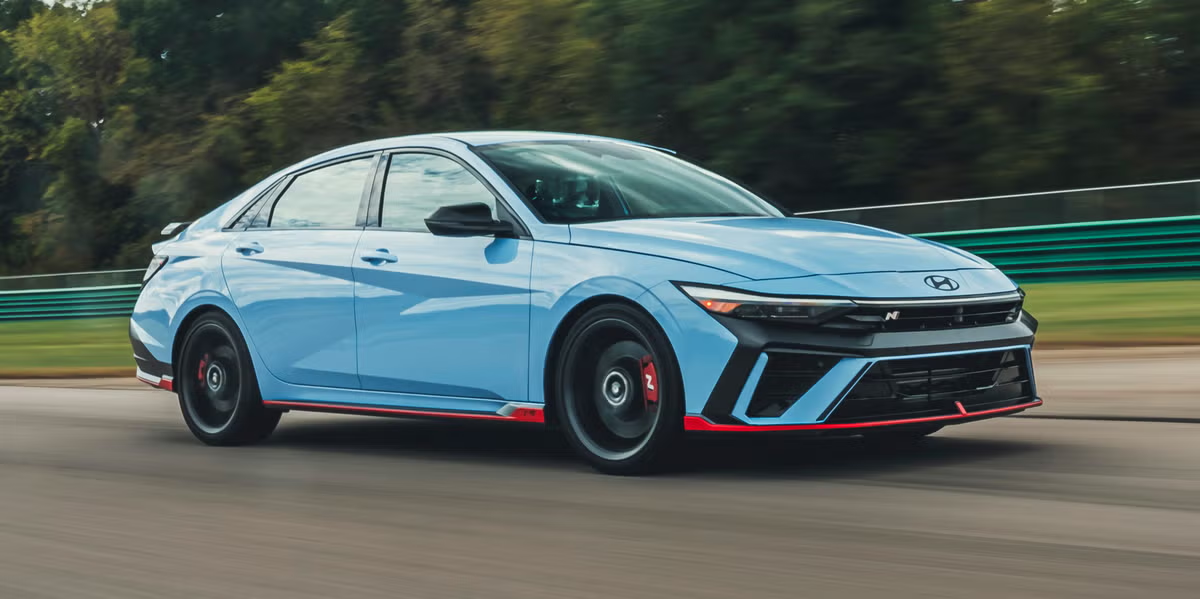
Even if you take it to a shop, most mechanics charge under $30 to replace the battery due to the vehicle’s design simplicity. What’s more, there’s no special reset procedure needed after a battery change. There are no start-stop systems or luxury electronics requiring power memory devices or dealer reprogramming.
This era of Elantra also avoids parasitic draw issues common in some other compact cars. The electrical system is conservative in its demands, meaning standard batteries last a decent amount of time—typically around four years, depending on climate and use.
Hyundai’s alternator and charging system in this period is well-tuned for battery longevity, which also reduces replacement frequency.
Overall, the 2008–2014 Elantra is a solid choice for anyone looking to avoid surprise maintenance costs.
Affordable parts, ease of access, and lack of specialized service requirements make this compact sedan or hatchback one of the most financially forgiving vehicles in its class. Battery replacements rarely exceed $150, helping budget-minded owners keep long-term operating costs comfortably low.
5. 2012–2017 Chevrolet Sonic
The Chevrolet Sonic, produced from 2012 to 2017, was GM’s effort to offer a small, efficient, and budget-friendly car to younger buyers and commuters.
While it may not have the reputation of its Japanese competitors, it surprises many when it comes to low-cost upkeep. One particularly affordable area is battery replacement—an expense that usually remains under $150.
The Sonic typically uses a Group 47 (H5) or Group 48 battery, both of which are readily available at chain auto parts stores, Walmart, or online retailers. Pricing ranges from $110 to $145 depending on the brand and warranty offered. Many Sonic owners report paying as little as $95 during promotional sales or by using store coupons and loyalty rewards.
Replacing the battery is a relatively easy task. The battery is housed near the front of the engine bay under a simple plastic cover.
The only tools needed are a socket wrench and a bit of patience—no software resets, no coded systems, and no reprogramming involved. Even for those who prefer taking it to a mechanic, installation costs are minimal due to the quick job time.
While the Sonic does feature features like touchscreen infotainment and OnStar, these systems don’t significantly affect the battery replacement process.
There’s no need for battery registration like in European cars, and no start-stop system requiring expensive AGM units. Standard flooded lead-acid batteries work just fine and are fully compatible.
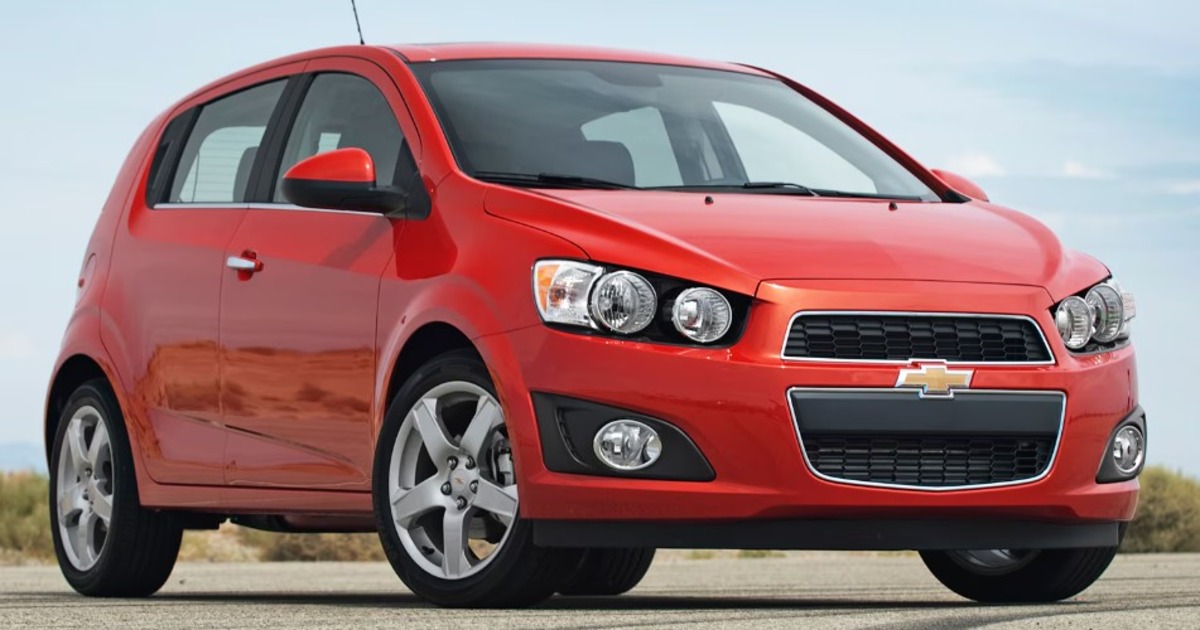
Owners also benefit from a straightforward electrical layout. The alternator is appropriately sized, and the vehicle’s design doesn’t subject the battery to high levels of thermal stress or unnecessary cycling. As a result, many drivers enjoy 3 to 5 years of life from a standard battery, making the infrequent sub-$150 replacement even more cost-effective.
Though the Sonic has since been discontinued, its parts—including batteries—remain cheap and accessible. For students, first-time car buyers, or anyone needing a reliable daily driver that won’t bust the bank come maintenance time, the Chevrolet Sonic offers a lot of value.
Its battery replacement cost being so low is just one more way this little car keeps things economical for owners long after they’ve left the dealership.
5 Cars Where Battery Replacements Are Over $400
While most drivers expect a routine battery replacement to cost under a couple hundred dollars, some vehicles can turn this simple service into a costly and frustrating ordeal.
In recent years, advancements in automotive technology—particularly in luxury and hybrid vehicles—have dramatically increased the complexity and price of battery replacements.
For these cars, battery swaps can easily exceed $400, and in some cases, even approach the $1,000 mark depending on the service location, battery type, and labor involved.
This issue isn’t always about raw battery pricing alone. High-end vehicles often come equipped with advanced electronics, start-stop systems, AGM or EFB battery types, and integrated battery monitoring systems.
Many even require dealer-level tools to register the new battery to the vehicle’s system—something a DIY enthusiast or basic mechanic shop cannot always accommodate.
Additionally, luxury brands frequently mount the battery in hard-to-reach areas like under the rear seat, inside the trunk, or even beneath the vehicle, adding significant labor time and, consequently, cost.
In hybrids and plug-in hybrids, the auxiliary 12-volt battery may seem small compared to the high-voltage traction battery, but even this component can be unusually expensive due to limited availability or proprietary sizes.
OEM-only replacements are often required, and aftermarket options may void warranties or not perform reliably.
The following five vehicles are known for their above-average battery replacement costs. Whether due to location of the battery, use of specialty battery types, or brand-specific programming and registration procedures, owners of these models often find themselves paying far more than expected for this otherwise basic service.
Each example serves as a cautionary tale for those looking to avoid unexpected repair bills—and a reminder that in the automotive world, not all batteries are created (or priced) equally.
1. 2017–2023 BMW 5 Series (G30)
The seventh-generation BMW 5 Series (chassis code G30), introduced in 2017, is a luxury midsize sedan that seamlessly blends technology, performance, and premium features.
However, beneath its sophisticated styling lies a detail that catches many owners off guard: battery replacements can easily exceed $400.
This generation uses an advanced electrical system that includes start-stop functionality, intelligent energy management, and sometimes mild hybrid technology.
Most trims require an AGM (Absorbent Glass Mat) battery, which is more durable under cycling loads but also considerably more expensive.
A replacement AGM battery from a BMW dealership costs $350–$450 just for the part, and third-party options are rarely under $250. Adding labor—typically $100–$150 at a qualified shop—pushes the total well over the $400 mark.
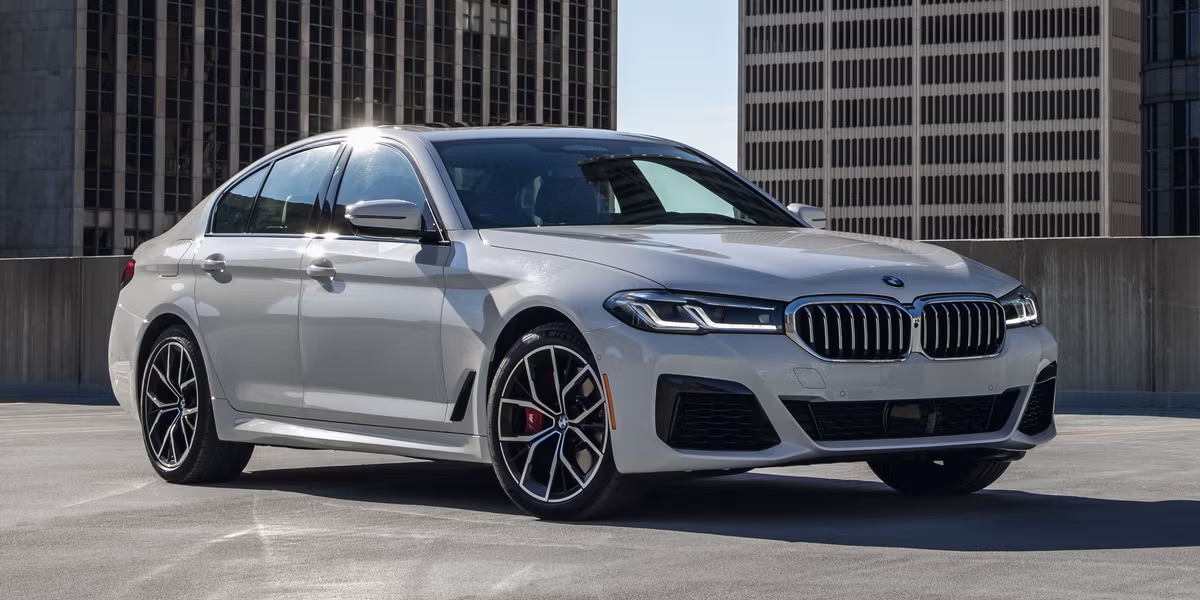
The battery is located in the trunk, under a carpeted panel and held in place by bracing and electronic connectors. It isn’t a simple pull-and-replace job. After installation, the battery must be registered with the vehicle’s onboard computer using a specialized tool.
Failure to do this can result in improper charging rates, premature battery failure, or error messages on the iDrive screen. Independent shops with BMW software tools (like ISTA or Autologic) can perform this, but few outside major metro areas offer this capability.
Additionally, because the G30 integrates its energy systems tightly with driver-assist features and climate controls, a low or incorrectly installed battery can affect more than just starting power—it may interfere with the comfort and safety systems of the vehicle.
Many BMW owners are surprised by how many systems rely on a clean, regulated power source and are forced to seek out authorized service centers just to perform what was once a simple maintenance task.
While the BMW 5 Series offers an exceptional driving experience, its battery replacement process is a clear reminder of how complexity and luxury can drive up even basic maintenance costs.
2. 2016–2022 Mercedes-Benz E-Class (W213)
The 2016–2022 Mercedes-Benz E-Class (W213) represents the epitome of refined luxury and cutting-edge German engineering.
While its tech-packed interior and smooth driving dynamics earn it praise, the same sophistication contributes to a frustrating reality for owners: replacing the 12-volt battery can cost well over $400.
Unlike many mainstream vehicles, the E-Class doesn’t just use one battery. It features both a main starter battery and an auxiliary battery to support its stop/start functionality, air suspension, and electrical stability systems.
In most cases, when the battery is due for replacement, both units are either replaced together or inspected side by side—drastically increasing parts and labor costs.
The main battery itself is typically a high-end AGM unit, priced between $300 and $400 if sourced from a dealership. Aftermarket options exist but often still hover around the $250 mark due to the higher power demand and reserve capacity requirements of the vehicle.
Adding professional installation—usually about $120 to $180 depending on the shop—easily brings the total above $400, particularly when auxiliary battery service is involved.
To further complicate matters, the main battery is located in the trunk under the floor, secured by numerous brackets and surrounded by control modules.
The auxiliary battery, however, is often found behind the glove compartment or beneath the dashboard, making access time-consuming. This dramatically increases the labor time if both are addressed during the same visit.
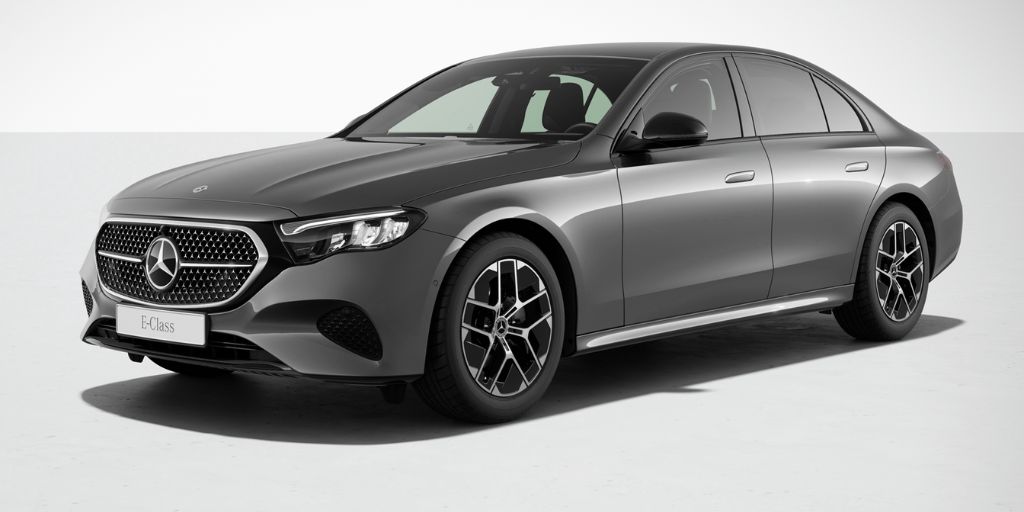
After physical replacement, Mercedes-Benz requires battery registration and system resets through their proprietary diagnostic tool, Xentry.
Without this, the vehicle’s electronic control units may not recognize the new battery, causing improper charging behavior or triggering warning messages in the infotainment cluster.
Unlike some brands where OBDII tools can handle basic resets, Mercedes insists on dealer-grade diagnostics to confirm all systems are updated.
Additionally, because the E-Class is loaded with advanced driver-assistance features, mood lighting, adaptive air suspension, and automatic door lock/unlock systems that rely on battery health, a poorly executed battery swap can disrupt multiple vehicle systems.
Owners report malfunctions in COMAND interfaces, rear seat recliners, or even power trunk functions after unregistered or incomplete battery jobs.
In summary, the Mercedes-Benz E-Class offers exceptional comfort and technology, but its reliance on premium electrical systems means even a standard 12V battery replacement is anything but simple—or cheap. For owners used to mainstream vehicles, the sticker shock at the service counter is a sobering reminder of the hidden costs of luxury.
3. 2018–Present Volvo XC90 Plug-In Hybrid (T8 Recharge)
The Volvo XC90 Plug-In Hybrid, now known as the XC90 Recharge T8, is a premium midsize SUV that combines Swedish elegance with forward-thinking hybrid technology.
While this model impresses with its blend of luxury and environmental responsibility, it also brings a hidden cost for owners—replacing the auxiliary 12-volt battery can cost well over $400, even though it’s not the vehicle’s primary propulsion battery.
Unlike traditional hybrids, the T8 Recharge uses a dual-battery setup: one high-voltage lithium-ion battery for the electric drivetrain, and a conventional 12-volt battery to support accessory functions, cabin electronics, and engine control modules.
Unfortunately, it’s this relatively small 12V battery that creates financial headaches due to its specialty design and limited serviceability.
The auxiliary battery is a compact AGM unit with unique dimensions and terminal placements specific to Volvo’s hybrid layout.
As a result, aftermarket options are limited, and most replacements must be sourced directly from Volvo, with battery prices typically landing between $250 and $350. Labor isn’t straightforward either.
The 12V battery is tucked away in the trunk area, beneath the cargo floor and adjacent to hybrid system components. This location requires disassembly of trim pieces and protective panels, increasing shop time and care due to the proximity of high-voltage elements.
Professional installation usually adds another $100 to $150, especially if done at a Volvo-certified facility. Add in necessary software resets or programming through Volvo’s VIDA system, and the final bill often lands between $450 and $600, depending on location and dealership labor rates.
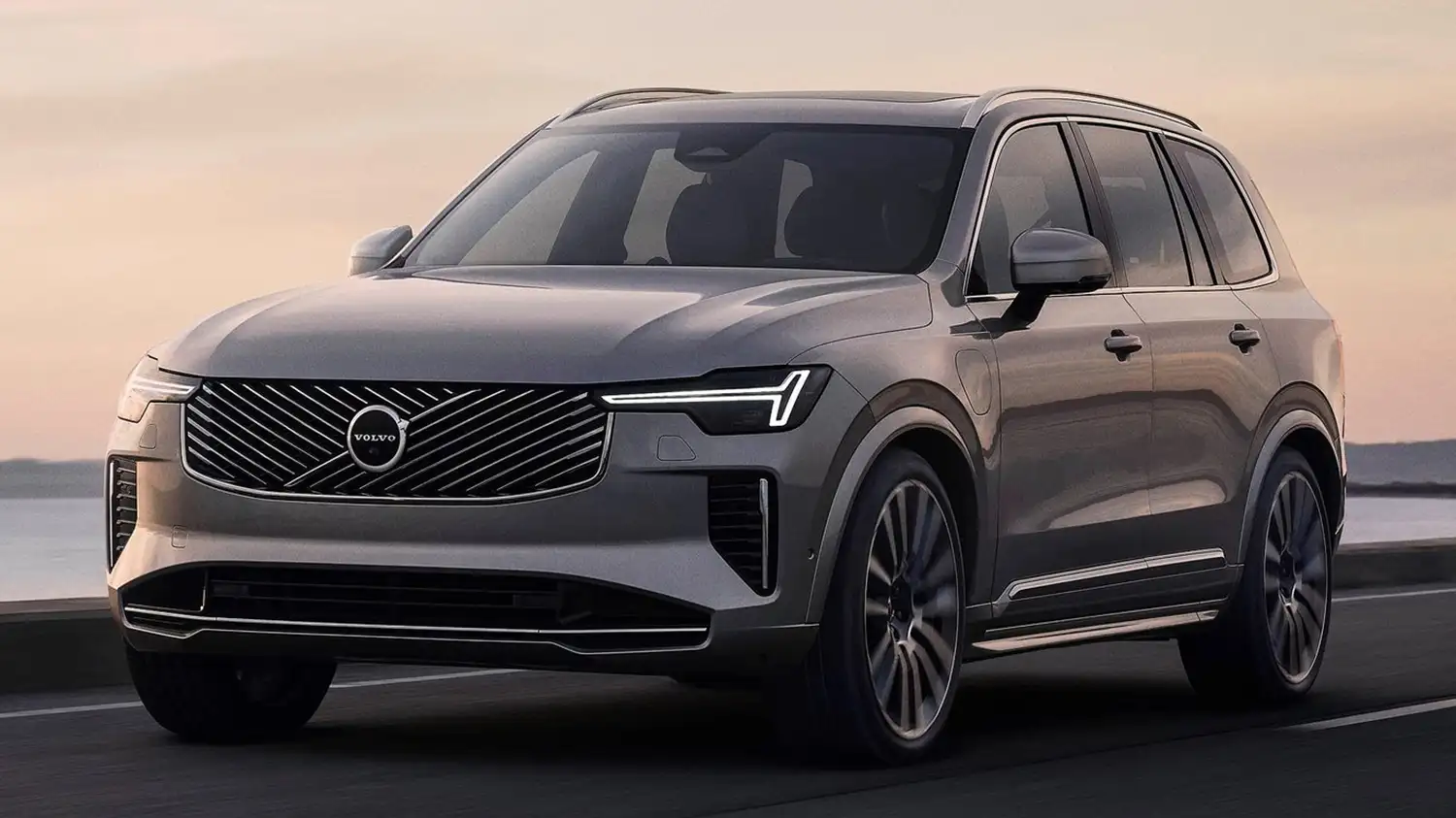
Complicating matters is the need for battery registration post-installation. Volvo’s energy management system must recognize the new battery to accurately maintain voltage levels and prevent unnecessary wear on the alternator or hybrid charging systems.
If this isn’t done properly, owners may see persistent dashboard warnings, infotainment glitches, or even climate control malfunctions.
Ironically, because the XC90’s hybrid system often masks the signs of a failing 12V battery (like slow cranking or dim lights), many owners are caught off guard when electronics begin to malfunction without warning
. Features like remote start, powered tailgate, or parking sensors may suddenly stop working—all tied back to a dying or incorrectly installed 12-volt battery.
Ultimately, while the XC90 Recharge is a showcase of sustainable luxury, it also highlights the hidden complexity—and cost—of servicing modern hybrids. Even what should be a simple battery change becomes an expensive procedure due to specialization and system integration.
4. 2015–2022 BMW X5 (xDrive40e and xDrive45e Plug-In Hybrid)
The BMW X5 Plug-In Hybrid models—first the xDrive40e and later the xDrive45e—blend high-performance German engineering with eco-conscious electrification.
But owners of these hybrids often find themselves paying dearly for what should be a routine maintenance task: replacing the 12-volt battery.
The final bill typically exceeds $400, and in some cases, it can inch toward $700 depending on labor rates and diagnostic needs.
These X5 plug-in hybrids come with both a large high-voltage lithium-ion battery and a smaller AGM 12-volt battery that powers all ancillary systems including lights, sensors, and control units.
BMW uses specially calibrated batteries with Intelligent Battery Sensors (IBS) that constantly monitor health, temperature, and charge status.
A generic battery won’t suffice, as the car’s software demands specific voltage profiles for compatibility with the vehicle’s energy management system.
Physically, the battery is located in the trunk, under a layered carpet system and next to control modules for the hybrid system and infotainment. This makes access time-consuming and delicate.
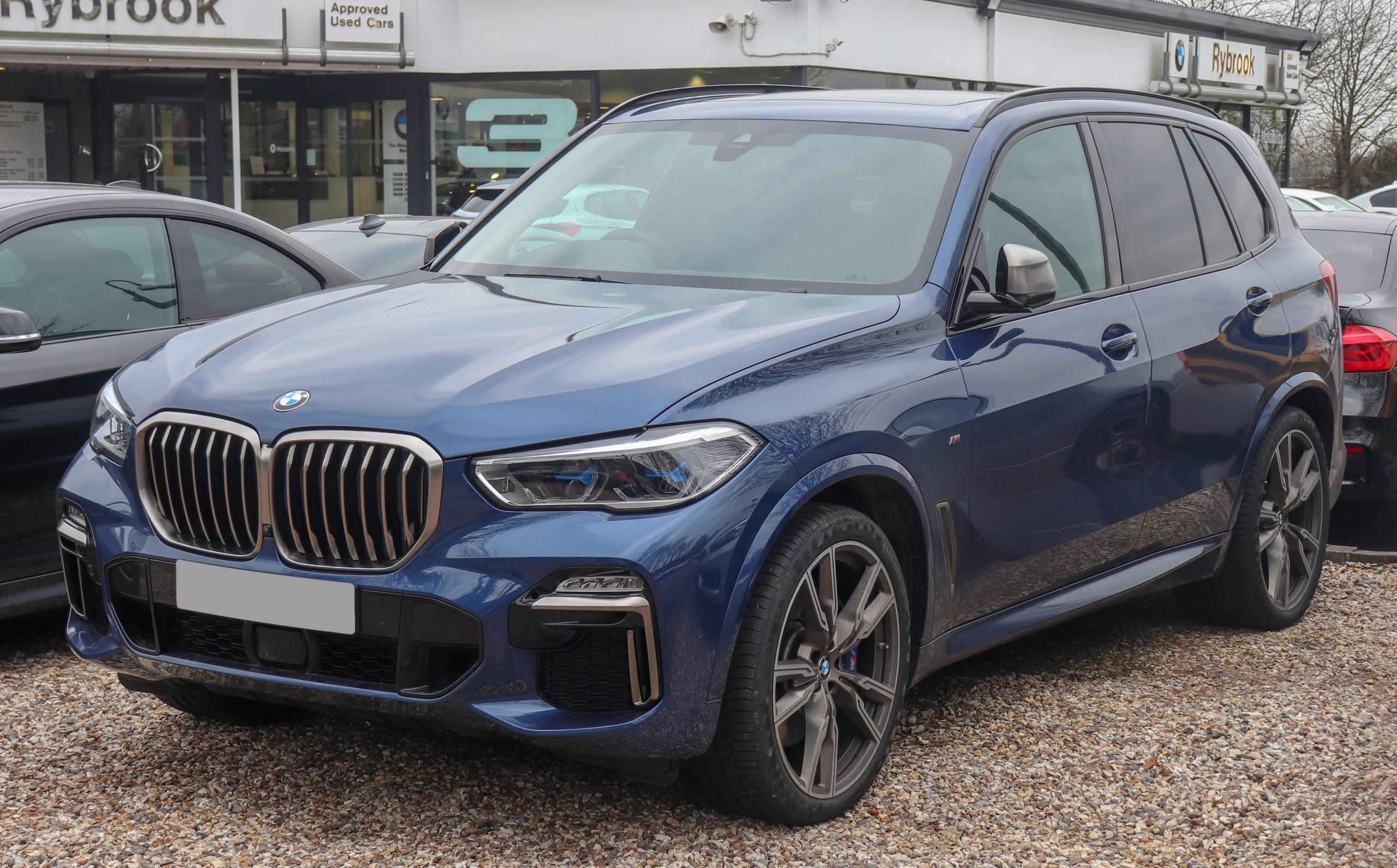
Battery cost from a BMW dealership runs around $300–$400, and labor adds another $100–$150 due to the vehicle’s complexity and the need to disconnect hybrid safety components.
What pushes the cost over the top, however, is the mandatory battery registration and programming. After installation, the battery must be registered with BMW’s ISTA diagnostic system to inform the alternator and onboard modules of the new battery’s condition.
Skipping this step could result in premature battery failure or erratic electrical behavior, such as non-functional driver aids or malfunctioning keyless entry systems.
Despite being a luxury SUV that exudes refinement and environmental consciousness, the X5’s advanced hybrid architecture transforms a simple battery replacement into a high-cost, high-precision service.
Owners new to luxury electrification often find themselves caught off guard by just how complicated routine maintenance can become.
5. 2020–Present Audi Q7 55 TFSI e Plug-In Hybrid
The Audi Q7 55 TFSI e Plug-In Hybrid exemplifies modern German sophistication, offering three-row comfort, premium tech, and hybrid efficiency. Yet beneath the polished veneer lies a financial burden: the cost of replacing the auxiliary 12-volt battery routinely exceeds $400.
Audi’s hybrid Q7 uses a two-battery system: a high-voltage lithium-ion pack for propulsion and a standard 12-volt AGM battery for essential electronics, computers, lighting, and safety systems.
Unlike conventional setups, this 12V battery must be specially matched to Audi’s start/stop system and onboard diagnostics, ruling out many budget aftermarket options.
The battery is located under the front passenger seat in a tightly sealed and insulated compartment. This makes replacement labor-intensive, as it requires seat removal, floor panel disassembly, and careful handling around sensitive wiring.
Even experienced technicians need 1.5 to 2 hours to perform the work correctly. Labor alone can add $180–$250 to the total cost, and the OEM battery itself typically retails for $250–$350.
After installation, Audi mandates software updates and battery registration using its ODIS diagnostic system.
This process recalibrates the vehicle’s energy management software, ensuring efficient charging and proper communication with the alternator and power modules.
Without this step, owners may experience flickering interior lights, electronic stability control warnings, or a refusal of the start/stop system to function.
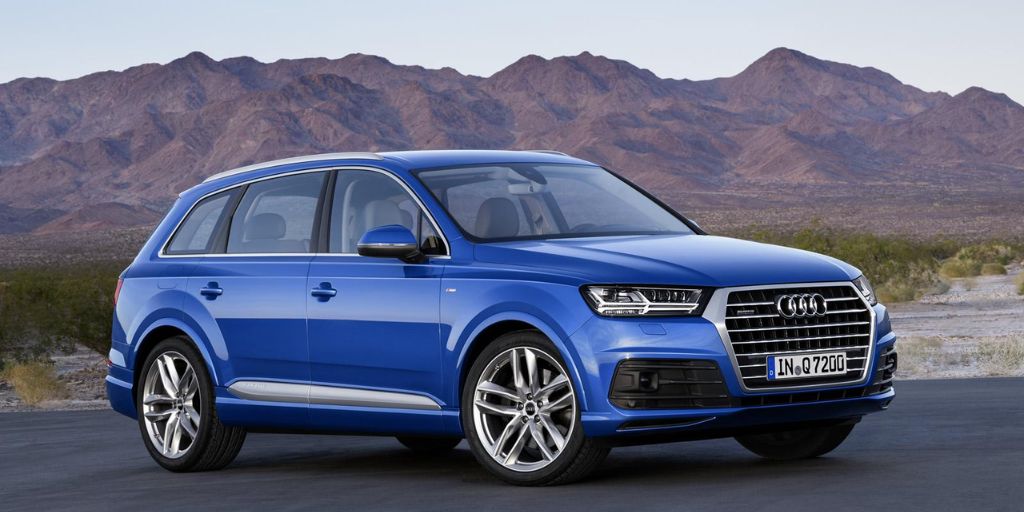
Some drivers report a third level of complication: when the 12-volt battery is nearing failure, it can cause cascading system errors that include infotainment crashes, malfunctioning liftgate sensors, or complete loss of drive modes—problems often misdiagnosed until the battery is properly tested or replaced.
Given the Q7’s role as a family luxury hauler with a focus on quiet power and seamless tech integration, it’s surprising that such an essential service item has a price tag that rivals much more serious repairs.
However, this reflects the growing complexity of modern plug-in hybrids, where even traditional components like 12V batteries are deeply embedded in proprietary software ecosystems.
For Q7 55 TFSI e owners, a battery swap isn’t just routine maintenance—it’s a carefully orchestrated service event that can easily cross the $500 mark, making it one of the costlier “minor” repairs in the luxury hybrid segment.
Battery replacement may seem like a minor maintenance event, but it offers surprising insight into the broader realities of vehicle ownership.
Across the ten cars we’ve examined—five with easily manageable sub-$150 battery changes and five where the process crosses $400—we’ve seen just how much variation exists in this seemingly routine task.
Vehicles like the Toyota Corolla, Ford Ranger, and Honda Civic illustrate the benefits of traditional engineering and parts commonality.
These cars rely on widely available battery sizes, offer simple access points, and require no specialized tools or software reprogramming. For budget-conscious owners or those who enjoy DIY maintenance, these models minimize not just the cost but also the hassle of service.
Their simplicity stands as a reminder that reliability and affordability often go hand in hand, especially when it comes to long-term ownership costs.
On the opposite end, luxury hybrids and electrified SUVs such as the BMW X5 xDrive45e, Audi Q7 TFSI e, and Volvo XC90 Recharge highlight how complexity—often in pursuit of advanced features or eco-efficiency—can turn a basic service into a multi-step ordeal.
With batteries tucked under seats, integrated into advanced electronic systems, and requiring dealer-only diagnostic tools for registration, these vehicles demonstrate how “minor” repairs are no longer minor in modern hybrids and luxury vehicles.
Costs quickly spiral not due to the battery itself, but because of the required labor, programming, and the need to maintain delicate electronic balances.
The choice between these types of vehicles comes down to priorities. If simplicity, cost-effectiveness, and ease of service rank high, then models with under-$150 battery replacements are appealing.
However, if cutting-edge features and hybrid capability are essential, buyers must be prepared for higher service costs—even for something as basic as a battery.
Ultimately, understanding the implications of battery replacement costs before purchasing a vehicle can prevent surprises and align expectations with ownership realities.
It’s a small component, but one that speaks volumes about a car’s design philosophy and its impact on your wallet over time.
Also Read: 5 Cars That Still Get Good Mileage at 200K Miles and 5 That Don’t Move Without Fuel

